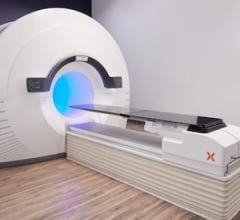February 13, 2009 – New research findings out of Wake Forest University School of Medicine and the University of Wisconsin may help provide some direction for men diagnosed with prostate cancer about whether their cancer is likely to be life-threatening.
In a study that appears in the February issue of "Cancer Epidemiology, Biomarkers & Prevention," a journal of the American Association for Cancer Research, researchers confirmed their earlier findings that men who have too much calcium in their bloodstreams subsequently have an increased risk of fatal prostate cancer. Now researchers have also identified an even more accurate biomarker of the fatal cancer: high levels of ionized serum calcium.
“Scientists have known for many years that most prostate cancers are slow-growing and that many men will die with, rather than of, their prostate cancer,” said Gary G. Schwartz, Ph.D., senior author of the study and an associate professor of cancer biology at the School of Medicine, a part of Wake Forest University Baptist Medical Center. “The problem is, how can we determine which cancers pose a significant threat to life and need aggressive treatment versus those that, if left alone, are unlikely to threaten the patient’s life? These findings may shed light on that problem.”
This was the first study to examine fatal prostate cancer risk in relation to prediagnostic levels of ionized serum calcium, and researchers found that men in the highest third of ionized serum calcium levels are three times more likely to die of prostate cancer than those with the least amount of ionized serum calcium.
Researchers also confirmed a previous finding of a doubling of risk for fatal prostate cancer among men whose level of total serum calcium falls in the highest third of the total serum calcium distribution.
Ionized serum calcium is the biologically active part of total serum calcium. About 50 percent of total serum calcium is inactive, leaving only the ionized serum calcium to directly interact with cells.
The findings have both scientific and practical implications, said Halcyon G. Skinner, Ph.D., of the University of Wisconsin, the study’s lead author. From a scientific standpoint, it helps focus research on what it is about calcium that may promote prostate cancer. On a practical level, the finding may offer some guidance to men trying to decide whether or not to seek treatment for a recent prostate cancer diagnosis. If confirmed, the findings could also lead to the general reduction of over-treatment of prostate cancer.
“Many men with this diagnosis are treated unnecessarily,” Schwartz said. “Within months of initial diagnosis of prostate cancer, many men opt to undergo either radiation or radical surgery. The problem is, we don’t know who needs to be treated and who doesn’t, so we treat most men, over-treating the majority. These new findings, if confirmed, suggest that men in the lower end of the normal distribution of ionized serum calcium are three times less likely than men in the upper distribution to develop fatal disease.
“These men may choose to delay treatment or perhaps defer it
altogether,” Schwartz added. “It also suggests that medicine may be able to help in lowering the risk of fatal prostate cancer by reducing serum calcium levels.”
Schwartz added that much of the ongoing research into the development of prostate cancer is focused on identifying characteristics of aggressive tumors, whereas this research is focused on identifying characteristics of the men who will develop the tumors before they actually develop.
He cautioned that calcium in serum is little influenced by calcium in the diet. Serum calcium levels are controlled genetically and are stable over much of an individual’s life, he said.
“These results do not imply that men need to quit drinking milk or avoid calcium in their diets,” Schwartz added.
The study was funded by grants from the National Institutes of Health and the American Cancer Society.
For more information: www.wfubmc.edu


 January 13, 2026
January 13, 2026 








